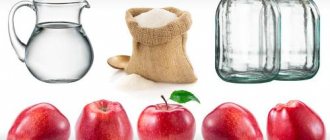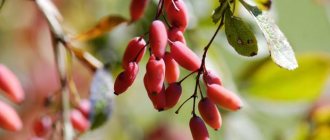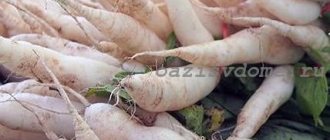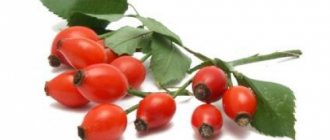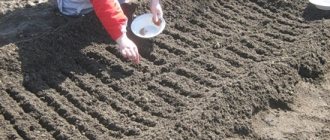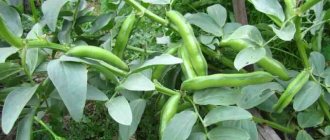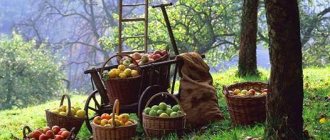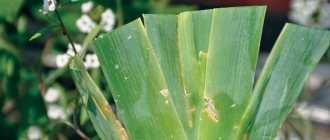A rich harvest of apples is the joy and pride of any gardener. But along with a large number of fragrant fruits, several problematic issues appear.
When to remove apples from a tree, and how to prepare the crop for further storage, where is the best place to remove the fruits for the winter?
Recommendations from experienced gardeners will help you harvest on time and preserve healthy and aromatic fruits.
Features of late ripening fruits
The fruits of winter apple varieties have a harmonious taste and persistent aroma. They ripen towards the end of September or beginning of October, when other fruits have already been harvested. Varieties removed from the branches in the fall (before frost) have a long shelf life.
They have larger fruits with a higher content of minerals, especially potassium and iron. Apples contain pectin, vitamins B1 and B2, and dietary fiber. The fruits have a strong peel and a dense pulp consistency. They are suitable for long-term storage and transportation.
How to determine the ripeness of apples
With early varieties of apples, everything is clear: they are eaten, and what is not eaten is processed into preserves, jams, compotes and juice. Or for dried fruits. Because summer apples are unsuitable for storage.
But late varieties are suitable for processing and are stored for a long time if they are removed in time, properly prepared for storage and all storage conditions are observed. You can determine the ripeness of apples by carrion: if among the fallen fruits you find ripe, large and beautiful ones, get ready to harvest. There are other signs that it is time to pick the fruits from the apple tree:
- if the dent on the apple made by pressing your finger disappears after a while, the fruits on this apple tree are not yet ripe, and if the dent does not level out, start harvesting;
- if the peel of the apple bursts when you press it, then you are probably already late with harvesting: the apples are overripe;
- the color of the fruit should be rich, the size should be medium, there should be no wormholes in the fruit, the taste should be sweet and sour (except for varieties with a sweet taste), the seeds should be brown, the flesh should be creamy or white, soft.
And even if you make a mistake and pick the apples a little earlier, it’s still better than if you were late and stored overripe fruits that will soon begin to rot.
Choosing a variety of apples for storage
Apple varieties for storage are selected from late-bearing trees. It is important to collect them on time so as not to disrupt the frequency of high yields in the garden. The tree needs time to gain nutrients in the winter, and the apples linger on the branches until mid-autumn. If you delay harvesting, next year the yield may be low.
Late varieties of apples have a long shelf life. They can last until the summer of next year without losing their taste. Their skin is stronger and the flesh is firmer.
Which varieties can be stored for a long time:
- Simirenko . The fruits are light green. Size medium or large. The pulp is hard, but after 2 - 3 months of storage it becomes soft.
- Bogatyr . The color is light green with a red blush, somewhat similar in appearance to the previous variety. While lying down they turn yellow. They hold up well throughout the entire storage period.
- Jonathan (Oslam apple) - red, elongated fruits.
- McIntosh - the flesh is softer than that of previous species, so they usually do not last until spring. You need to eat them before January.
- Red Delicious . The apples are large and deep red in color. They tolerate transportation well and can remain in the cellar until spring.
- Oryol synap . The main color of the peel is green, but over time, when ripening, a light pink blush forms.
- Antaeus turns red when ripe, but it is harvested when the peel is still greenish. It has a characteristic coating similar to wax, which is found in another Belarusian variety - Alesya . They remain until the summer of next year, since full ripening occurs 2 - 3 months after the apple harvest.
How to pick?
There are certain rules for harvesting apples, the observance of which determines how long the harvest will be stored:
The best time to collect sweet fruits is a dry, clear day. Experts advise harvesting in the afternoon, when the air warms up well and the fruits fall into the basket perfectly dry.
- The tree is not watered before harvesting.
- Ripe fruits are picked very carefully, grasping with all fingers, pressing on the stalk at the point of attachment to the branch.
- First of all, fruits are collected from the lower branches, smoothly moving to the very top.
- Picked apples are not thrown, but carefully placed in a prepared container (basket, dry bucket).
Special devices (a loop or a basket with a long handle) will help you carefully and, most importantly, quickly pick apples.
Harvesting Rules
In order for the fruits to be well preserved throughout the winter, it is necessary to comply with the storage conditions for apples:
- collect only in dry weather;
- Do not wipe away wax deposits before laying. These are beneficial bacteria that promote shelf life. There is something similar in grapes;
- You can't let apples fall to the ground. In areas of dents, rotting will quickly begin. Use collection devices.
Storing apples at home for the winter must be organized after preliminary preparation.
Storing apples in the ground
You can store fruits in the ground in a wooden box
If you do not have a basement or cellar, then you can store apples directly in the ground. To do this, a few days before harvesting, trenches 60x45x45 cm are dug. The bottom is covered with spruce or pine paws and juniper branches.
Collected and sorted fruits are placed in plastic or canvas bags, which are tightly tied. The bags are pierced with a needle in several places to allow ethylene to escape. Then they are laid in a trench at a distance of 25 cm from each other in one layer. When the hole is filled, it is covered with earth and covered with dry leaves and branches on top.
Preparing apples for storage
Before planting, it is necessary to sort through the entire crop and sort it by type and size. Large specimens quickly ripen and spoil, so they are put in a separate box and placed closer, since they need to be eaten first.
Smaller specimens may last longer. Durum varieties last until April. Thus, the entire harvest can be sorted according to apple shelf life and hardness:
- large ones that spoil quickly;
- large, hard;
- medium ones quickly spoil;
- medium hard;
- small.
When the harvest is sorted, you can begin preparing the containers.
How to pick apples and pears from a tall tree
The easiest way to remove fruit from the upper branches is to use an apple and pear picker. You can go several ways: buy an apple picker in a store or make it yourself.
For example, the simplest material at hand from which you can make a device for removing apples and pears is a plastic bottle.
We hope our article answered questions about how and when to pick apples and pears. For information on how to properly store the harvest, read our article How to keep apples and pears fresh until the next harvest.
What time to rent for storage?
Winter apples are harvested in mid-autumn; it is important to finish the work before persistent cold sets in. Unlike other types of apples, fruits intended for long-term storage are not allowed to fully ripen. They reach consumer maturity not on tree branches, but in boxes. The collection begins when the end of September arrives.
Apples are still hard and sour, they contain a large amount of starch. After 2–3 months, during the ripening process, the fruits acquire the color characteristic of the variety, and a pronounced aroma appears. Starch undergoes hydrolysis, turning into sucrose and glucose. Apples become sweeter and juicier.
The timing of crop ripening is influenced by weather conditions. In hot summers, the fruits ripen earlier; in the cold season, ripeness is delayed for several weeks. In addition to the calendar, experts determine the time when to pick apples for storage based on several criteria:
How do you know when it's time to harvest?
To keep a picked apple juicy and aromatic for as long as possible, it must be picked on time.
It is important to remember that overripe fruit does not last long, and unripe fruit does not have a pronounced taste, sweetness and aroma.
Signs that it is time to pick fruit from the tree:
Among the fallen fruits, large ones appeared with characteristic signs of ripeness (uniform color, distinct taste);
- the pulp is white or cream-colored;
- when pressed, the peel does not burst, indentations from the finger are not preserved;
- brown seeds;
- ripe fruit is easily separated from the branch along with the stalk.
There is also a chemical method for determining ripeness.
Algorithm of actions:
- Iodine is diluted with 1 gram of iodine in a liter of distilled water. and potassium iodide 4 g.
- A half-cut apple is dipped into the resulting solution.
- After two minutes, the result is assessed. If the apple turns blue at the edges of the cut, the fruit is unripe. A blue tint around the edges and a yellow tint in the middle indicates that the fruit is ripe. If only a yellow spot appears on the cut, the apple is overripe.
Does the harvest time depend on the variety?
According to the ripening period, apples are divided into several groups:
- Summer varieties . The fruits begin to be harvested in August. By this time, the fruits gain the maximum amount of sugar, juice, and vitamins. Experts advise that summer varieties be processed immediately, since they do not last long.
- Autumn varieties . The harvest lasts from August to September. Autumn varieties can be stored for no more than four months (if longer, the apple loses its density and the pulp becomes loose).
- Winter varieties . The fruits begin to be harvested in mid-September and end in mid-October. These are the most convenient apple varieties for storage. When picked in time, they retain their juiciness and taste until the beginning of spring.
How to store and pack?
Long-term storage of apples is possible only when the temperature is low enough - 2–5°C. The humidity in the room matters; it should be between 85–90%. In a dry microclimate, fruits quickly wither and wrinkle.
Containers with wet sand will help avoid this. If a basement is used for storage, it must be prepared. Clean up, whitewash the walls with a solution of lime and copper sulfate. Disinfection will get rid of bacteria and fungi that threaten the condition of the apples.
There are several ways to stack apples:
- each fruit is wrapped in paper and placed with the stalk facing up; it can be placed in several layers;
- apples are sprinkled with sand or clean sawdust, they should not touch each other, they are placed in a box in 3-4 layers;
- in hermetically sealed plastic bags, apples are poured into 5–7 kg, stored in the basement or in a hole outside, covered with earth.
The places where apples can be stored can be the following: pantry, balcony, basement, refrigerator. Important! Apples should not be stored next to other fruits and vegetables. They emit ethylene, which is harmful to food. During the winter, the fruits are regularly inspected , and rotten apples are removed.
How to prepare for storage in the cellar?
Before baskets or boxes of fruit go into the cellar for storage, it is necessary to carry out a number of preparatory measures:
- Sorting. The collected apples are sorted and divided by size (small, large, medium), by variety and by quality (the criterion of peel integrity and the presence of damage is considered). Particularly large fruits are set aside separately (they spoil very quickly).
- Packing into containers .
Experts recommend storing apples of different varieties separately, in different containers. Wooden boxes, previously well dried and disinfected with a solution of potassium permanganate, are ideal for storing fruits. It is important to ensure that when laying the fruits the stalks do not touch each other. To do this, layers of fruit are sprinkled with dry sawdust of non-coniferous wood.
Storage space
If there is no basement, a small number of apples are taken out onto the balcony, if the temperature in winter does not drop too low and the balcony is glazed. In this case, the harvest should be put in boxes and sprinkled with sawdust and straw so that the temperature inside is higher.
Storing apples in an apartment
Storing apples in the refrigerator is the only way in which it is possible to maintain a temperature regime of at least 1 degree. If you have a freezer, it can be set to a specific mode.
The fruits will remain at room temperature for some time—a month or a month and a half—if they are sorted and wrapped in paper. You can use a more expensive method - melt beeswax (not paraffin) and dip each apple, then dry it and put it in boxes. With this method, the fruit will always look fresh, as if it had just been picked from the tree.
Temperature and humidity
Even after being removed from the branch, vital activity continues in apples:
- the apple “breathes”, absorbing carbon dioxide and releasing oxygen;
- it needs moisture for cellular metabolism;
- fermentation and ripening of the fruit takes place.
All these processes are optimal at temperatures from 0 to +4 °C. However, the variety determines a lot. The same Northern Sinap or Antonov apples prefer coolness: they are stored in conditions from -1 to +3 °C. The recommended humidity for any winter variety is 85-92%.
A slight deviation from the norm does not mean immediate damage to the winter stock. It’s just that the shelf life will be shortened, the structure of the pulp will deteriorate, and the taste of the fruit will not fully manifest itself.

